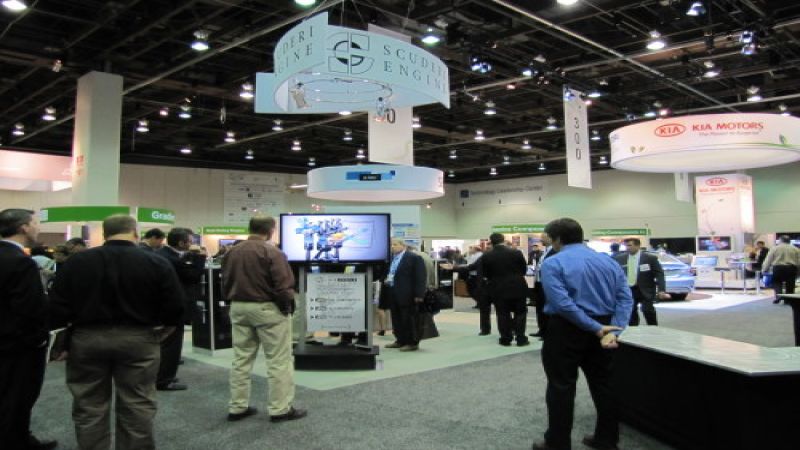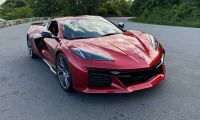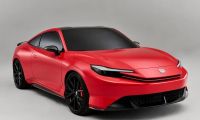The company found when the Miller cycle, a well-known combustion process, was applied to its split-cycle engine design, the brake specific fuel consumption (BSFC) decreases by 14 percent while power increases by 140 percent. That is the basis for the technical papers to be released on Wednesday morning.
No wonder Scuderi won the innovation award at last year‘s SAE. One year later the company actually finds another breakthrough. What automaker would turn down a return on invested time like that?
Fact is, Scuderi Group is an engine development company that is literally re-engineering the conventional four-stroke engine to advance fuel-efficient engine design as no other.
Today the company showed how just how much further it has gone toward efficiency. It introduced details at the Society of Automotive Engineers (SAE) World Congress (Booth No. 419) in Detroit’s Cobo Center of a technical discovery that not only enables maximum levels of power and torque while reducing the rate of fuel consumption, it enables engine size to be reduced.
This new engine design has the potential to help automakers cost-effectively reach 2016 federal fuel-economy standards for 35.5 miles per gallon, while maximizing the amount of power consumers can extract from a tank of fuel.
The result of the Miller cycle integration with the Scuderi split-cycle engine is a smaller, higher-performing engine that has the potential to produce more than 30-50 percent greater miles per gallon, which is what the split-cycle design achieved before the Miller addition.
Currently, the new engine innovation is being tested by the independent lab, Southwest Research Institute, on a 2011 Nissan Sentra with official results to be revealed in the coming weeks after World Congress.
Technical Details
Studies have concluded that the new engine design, when boosted with a turbocharger to 3.2 bar, decreases the BSFC (or brake specific fuel consumption) up to 14 percent, as a simultaneous increase occurs in the engine’s power BMEP (or brake mean effective pressure) by 140 percent. At the same time the engine can be reduced in size by roughly 29 percent.
Consistent with conventional four-stroke engine designs, the combustion cycle of the Scuderi™ Engine has two high-pressure strokes—compression and power, and two low-pressure strokes—intake and exhaust. The power stroke is deemed positive work, whereby the energy that is produced by the expanding gases creates mechanical work.
The intake, compression and exhaust strokes are all negative work. In other words, it is the energy that the engine consumes to create mechanical work. So, by separating the compression cylinder from the power cylinder via splitting the cycle, and by using a standard turbocharger to convert recovered exhaust-gas energy into compressed air energy, the size of the compression cylinder can be downsized to achieve substantial reductions in negative compression work.
“The Scuderi Engine gains a massive advantage from turbocharging, Miller-like valve control strategies and extended expansion that is simply not possible with conventional engine designs,” said President of Scuderi Group, Sal Scuderi. “The net result is a smaller, higher-performing engine that yields significant gains in volumetric efficiency and power as well as reducing BSFC. Studies are underway at the lab that will be announced in the coming weeks, that will show impressive results of the Scuderi™ Split-Cycle engine modeled in a 2011 Nissan Sentra. ”
Along with the SAE exhibit
The Scuderi Engine will be featured in two technical paper presentations on Wednesday, April 13 at the Detroit Cobo Center. They are as follows:
“Scuderi Split-Cycle Research Engine: Overview, Architecture and Operation” – 8:40 AM ET, Room W2-64
“Scuderi Split-Cycle Fast Acting Valvetrain: Architecture and Development” – 9:00 AM ET, Room W2-64
To listen to an audio podcast of Sal Scuderi discussing the recent lab breakthrough, you are invited to visit: http://www.scuderiengine.com/turbocharging.
For the record, this TorqueNews reporter has an appointment on Wednesday with the Scuderi team at 2:00 on the exhibit floor to discuss these findings further, and how they will impact the industry.
-----------------------
About the Author: After 39 years in the auto industry as a design engineer, Frank Sherosky now trades stocks and writes articles, books and ebooks via authorfrank.com, but may be contacted here by email: [email protected]
________________________________________________
Additional Reading:
Automakers display big wares at SAE 2011 World Congress
SAE 2011 World Congress to include Career Fair at Detroit Cobo Center
EPA sets milestone for alternate fuel industry with regulation amendments
Buick LaCrosse with eAssist on par with highway fuel economy of compacts
Scuderi Air-Hybrid Engine technology setting up to challenge electric hybrids
Cella Energy achievement may make hydrogen fill-up a reality
Stop-start technology to advance more micro hybrids by 2016
Four alternate engine technologies for 2011 and beyond










